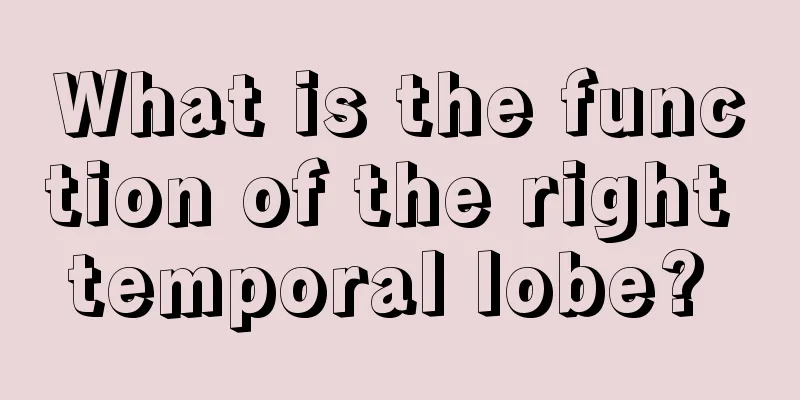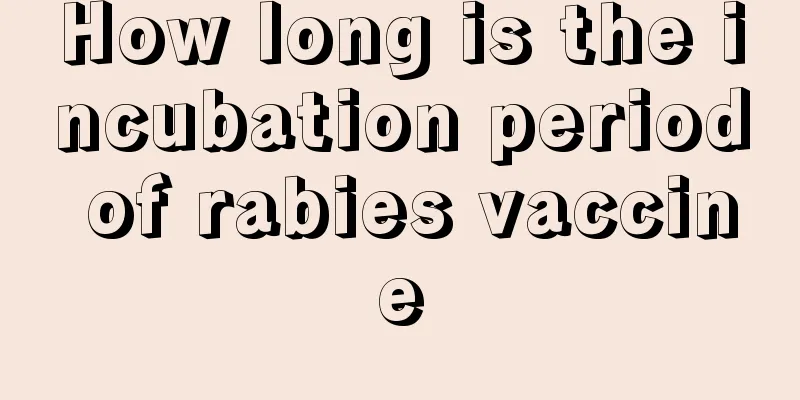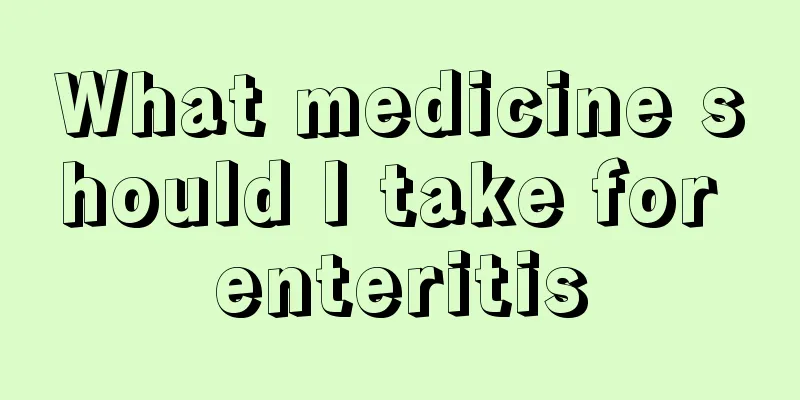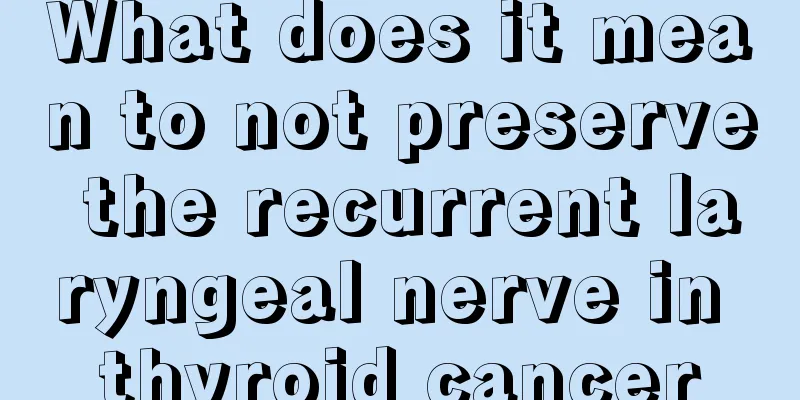What is the function of the right temporal lobe?

|
There are many diseases in the right temporal lobe of the human brain. For example, people with epilepsy have problems with the temporal lobe of the brain. The patient's consciousness will become hazy, there will be problems with language function, and thinking and sense of direction will be disordered. There will also be memory impairment, etc. This shows the great harm of diseases in the right temporal lobe. So what role does the right temporal lobe usually play? Functions of the right temporal lobe: The head is divided into left and right temporal lobes. The temporal lobe is located on the outer and lower sides of the head, next to the ears and inside the temples. The temporal lobe is located below the sylvian fissure, above the middle cranial fossa and the tentorium cerebelli, with the frontal lobe in front, the parietal lobe above, and the occipital lobe behind. The superior temporal sulcus, middle temporal sulcus and inferior temporal sulcus divide the temporal lobe into the superior temporal gyrus, middle temporal gyrus and inferior temporal gyrus. The tail end of the superior temporal gyrus rolls obliquely into the lateral fissure to form the transverse temporal gyrus. The fusiform gyrus is between the inferior temporal sulcus and the collateral fissure, and the hippocampal gyrus is between the collateral fissure and the hippocampal fissure. The hook of the hippocampal gyrus is located above the tentorium cerebelli, close to the edge of the tentorial notch. Areas 41 and 42 of the superior temporal gyrus and the transverse temporal gyrus are the auditory cortex areas. The posterior part of the superior temporal gyrus in the dominant hemisphere is the auditory speech center, called the Wernicke area, which also includes the posterior part of the middle temporal gyrus and the supramarginal gyrus and angular gyrus of the superior parietal lobule. The hook of the hippocampus is the olfactory and taste center. The front part of the temporal lobe is the mental cortex. Human emotions and mental activities are not only related to the orbitofrontal cortex, but also have a lot to do with the temporal lobe. The hippocampus is related to memory. The neocortex of the temporal lobe is connected to the neocortex of the frontal, parietal and occipital lobes by fibers; the hippocampus is connected to the basal ganglia and limbic system; there are also connections between the two temporal lobes. The auditory cortex receives impulses from the medial geniculate body and from the contralateral temporal lobe via the corpus callosum. The uncinate fasciculus bypasses the Sylvian fissure to connect the temporal and frontal poles. The cingulate bundle has fibers to the hippocampus. The anterior part of the cingulate bundle is connected to the uncinate fasciculus. It also receives impulses from the anterior and dorsal nuclei of the thalamus and the reticular nucleus of the brainstem. The efferent fibers of the temporal lobe include the corticogeniculate fasciculus and the corticomesencephalic fasciculus. The temporal lobe is located below the sylvian fissure, above the middle cranial fossa and the tentorium cerebelli, with the frontal lobe in front, the parietal lobe above, and the occipital lobe behind. The superior temporal sulcus, middle temporal sulcus and inferior temporal sulcus divide the temporal lobe into the superior temporal gyrus, middle temporal gyrus and inferior temporal gyrus. The tail end of the superior temporal gyrus rolls obliquely into the lateral fissure to form the transverse temporal gyrus. The fusiform gyrus is between the inferior temporal sulcus and the collateral fissure, and the hippocampal gyrus is between the collateral fissure and the hippocampal fissure. The hook of the hippocampal gyrus is located above the tentorium cerebelli, close to the edge of the tentorial notch. The blood supply of the temporal lobe is as follows: the anterior temporal branch of the middle cerebral artery supplies the lateral surface of the temporal pole, the middle temporal branch supplies the central part of the lateral surface of the temporal lobe, and the posterior temporal branch supplies the posterior part of the temporal lobe. The posterior cerebral artery gives off anterior temporal branches to supply the uncus, hippocampus, and anterior part of the fusiform gyrus. The anterior choroidal artery supplies the temporal pole, hippocampus, and uncus. |
<<: Is it okay for a 6 month old baby to sleep on his stomach?
>>: Tips for preventing rice from sticking to the rice cooker
Recommend
I have stomach pain because my period didn't come. Be careful of pregnancy
Female friends, if your menstruation has always b...
The three most common groups with a high risk of breast cancer
According to recent survey statistics, the incide...
Why do women get cervical cancer? What should women do if they have cervical cancer?
Why do women get cervical cancer? Cervical cancer...
A brief analysis of common surgical methods for treating bone cancer
Surgical treatment of bone cancer is currently th...
What is gastrointestinal decompression surgery
Everyone's gastrointestinal development and p...
What to do if knee ligament is injured
Knee ligament injuries must be treated scientific...
Feeling tight and stiff calf muscles
People who love running as a form of exercise, or...
Nourish the liver in spring and the heart in summer
It is said that one should nourish the liver in s...
How to prevent vascular headaches, three tips to teach you
Vascular headaches are short-lived and painful, w...
Pre- and post-operative nursing rounds for colorectal cancer
Like most tumors, colon cancer is treated with su...
What are some tips for preventing scars from oil burns on the face?
Usually after being scalded by oil, if you don’t ...
What are the nutritional values of green shell eggs
Nowadays, many families eat eggs, and many famili...
The dangers of living in an unfinished house for a long time
Many modern people like to decorate their own hou...
Is persistent dizziness a sign of brain cancer?
Brain tumor is a disease that has had a great imp...
Is the cost of treating small cell lung cancer expensive?
Is it expensive to treat small cell lung cancer? ...









